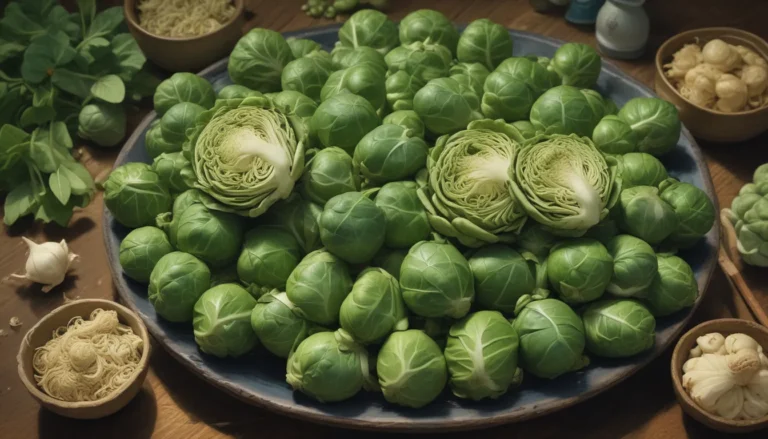The Ultimate Guide to Growing Cosmos in Containers

Are you a fan of wildflowers but don’t have access to a meadow to sow seeds? Or perhaps you simply enjoy the idea of creating your own mini potted display of cosmos. These plants are known for their wispy foliage and vibrant blossoms that attract bees and butterflies, making them a perfect addition to your summer garden.
In this comprehensive guide, we will explore everything you need to know about growing cosmos in containers. From the best varieties to growing tips and pest management, we’ve got you covered. So let’s dive in and learn how to cultivate these beautiful blooms in pots!
What You’ll Learn
- Why Choose Container Growing? – Which Container Is Best? – How to Prepare Your Container – How to Grow – Growing Tips – Cultivars and Species to Select – Managing Pests and Disease
Cosmos have been a popular choice for gardens worldwide due to their bright, airy petals and attractive appearance. While some species may not be ideal for growing in pots, there are certain varieties that make excellent candidates for container planting. Furthermore, cosmos come in both annual and perennial types, suitable for USDA Hardiness Zones 3 to 11.
Container growing offers various benefits, especially for those with limited space or who prioritize growing food crops. The convenience of portable pots allows for better protection from the cold and easy relocation to sunnier spots. Additionally, containers make it easier to control water levels and amend the soil as needed.
Which Container Is Best?
Choosing the right container is crucial for the successful growth of cosmos. Since these plants have deep roots, opt for pots that are at least 12 inches deep with a wide base to prevent tipping. Materials such as clay or concrete are ideal for promoting airflow and drainage, essential for cosmos’ health.
Plastic or resin pots should be avoided as they tend to retain moisture, leading to root rot. Ensure the container has drainage holes to prevent waterlogging, which can harm the plants. Consider vessels like the Paloma planter, with a wide base to provide stability while adding aesthetic appeal to your garden.
How to Prepare Your Container
Before planting cosmos, it’s essential to sanitize the container to eliminate any potential pests or pathogens. Reuse pots should be scrubbed with soapy water and then treated with a diluted bleach solution for 15 to 30 minutes. Rinse the pot thoroughly to remove any residual bleach before filling it with soil.
Cosmos prefer sandy, low-nutrient soil, so a mix of potting soil or coconut coir with sand works well. This prevents weak stems and enhances blooming rates. Once the container is prepared, you’re ready to plant your cosmos seeds or tubers.
How to Grow
Cosmos are relatively low-maintenance plants that thrive with minimal attention. Whether you start from seeds or seedlings, cosmos grow quickly and produce beautiful blooms within weeks. Make sure to soak bare roots before planting and keep the soil moist until the roots are established.
Planting
When planting cosmos, space them accordingly based on their height, ensuring they have enough room to grow without crowding. Place the container in a sunny location and provide consistent moisture without overwatering. Taller species may require staking for support.
Watering
Check the soil daily for moisture levels, especially during hot weather. Water thoroughly when the top layers are dry to promote healthy growth. Adjust the watering frequency based on weather conditions to prevent underwatering or overwatering.
Pruning
While cosmos don’t require significant pruning, regular deadheading and cutting can enhance blooming and encourage new growth. Trim the stems to promote branching and remove spent flowers to prolong the blooming season.
Winterizing
For perennial cosmos, provide winter protection in colder regions to ensure their survival. Move the containers to sheltered areas or wrap them for insulation against frost. Annuals can be stored indoors over winter or left to self-seed for the next growing season.
Repotting
Repotting may be necessary for perennial cosmos to maintain healthy root growth. Prepare new containers and transfer the plants carefully while checking for any damaged roots. Refresh the soil and water the plants thoroughly to help them adjust to their new pots.
Growing Tips
- Choose a container with adequate depth and a wide base to prevent tipping over. – Provide at least 6 hours of sunlight daily and avoid overwatering to promote healthy growth. – Use sandy, low-nutrient soil to prevent weakened stems and enhance blooming rates.
Cultivars and Species to Select
When selecting cosmos for container planting, consider compact varieties that fit well in pots. Dwarf cultivars like Capriola and Rose offer vibrant blooms in a manageable height range. For bold colors, Sulfur cosmos provides bright orange-yellow flowers on compact plants, ideal for containers.
Managing Pests and Disease
While cosmos grown in containers are generally resistant to pests and diseases, occasional issues like aphids or powdery mildew may arise. Regular monitoring and proper care can help prevent these problems and ensure the health of your cosmos plants.
Blossoms Floating Like Stars in the Sky
Growing cosmos in containers is a rewarding experience that adds beauty and charm to any garden space. Whether you’re a novice gardener or a seasoned plant enthusiast, these lovely blooms are a delightful addition to your outdoor oasis.
So, why not try your hand at growing cosmos in containers? Share your gardening adventures and photos in the comments below! We’d love to hear about your experiences and provide further assistance if needed.





